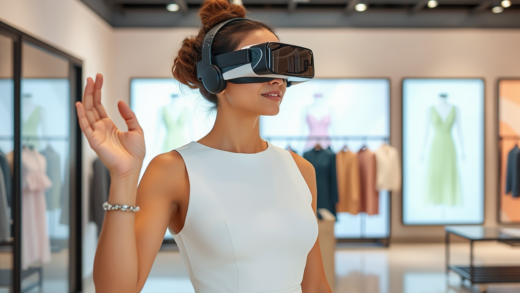Medical training simulations have surged ahead, blazing trails in teaching anatomical concepts with vibrancy and authenticity. By harnessing advanced tech wizardry, these simulations construct engaging learning worlds that captivate both students and seasoned professionals. Envision delving into the human body within a three-dimensional realm where each structure is open for detailed examination, yielding insights crucial for understanding their interplay. This groundbreaking methodology not only amplifies learning but also ensures that classroom-acquired skills seamlessly transition to real-world application. As techniques and technologies continuously evolve, the uses for anatomical training simulations grow ever more varied and compelling.
The intricate nature of human anatomy can overwhelm students. Gone are the days when rote memorization ruled; now, learners can investigate anatomical structures firsthand through simulations mirroring true-to-life scenarios. These hands-on experiences nurture a deeper comprehension of complex systems and anomalies. This article will uncover the significance, diversity, effectiveness, and future trends in anatomical simulations within medical education.

Significance of Anatomical Simulations in Medical Training
Anatomical simulations are essential in elevating the learning journeys of medical students and professionals through various forward-thinking methods. A paramount advantage is that they provide a concrete grasp of human anatomy, enabling learners to visualize and engage with anatomical structures instead of merely memorizing charts. This direct approach simplifies intricate data and significantly boosts information retention over time. With more sophisticated technology becoming accessible, students have the opportunity to acquire real-time experiences, sharpening their abilities in environments that simulate clinical realities.
Consider the merits of realistic anatomical models, from tangible representations to high-tech digital depictions. These resources offer numerous advantages that bolster comprehensive learning outcomes:
- Deepened Learning: Visualizing anatomical elements enhances understanding of spatial interconnections.
- Competency Development: Practicing with these detailed simulations polishes motor skills and procedural techniques securely.
- Heightened Engagement: Interactive simulations maintain learner focus and motivation for absorbing knowledge.
Varieties of Medical Training Simulations
The expanse of anatomical simulations is broad and varied, integrating an array of technologies that redefine the landscape of medical training. From virtual reality (VR) to augmented reality (AR), each tool features unique attributes that elevate the educational experience. VR offers an immersive journey that transports students into a virtual operating theater, encouraging interactive engagement with anatomical facets. Conversely, AR enhances real-world settings by layering in extra information, allowing hands-on exploration with immediate definitions.

Virtual Reality (VR) in Medical Education
Virtual reality technology has transformed medical instruction by crafting an entrancing, engaging environment for learners. Students can navigate through intricately detailed anatomical structures in 3D, enriching their grasp of body mechanics. Additionally, scenario-based training permits learners to perform a multitude of medical procedures within simulated settings that mirror actual circumstances. This not only readies medical professionals for real-world challenges but also instills confidence in their skills.
Augmented Reality (AR) Enhancements
Augmented reality acts as an excellent tool, projecting added insights onto real-world scenes. This augmentation assists teaching dialogues by helping students connect academic knowledge with practical applications. For instance, AR can be wielded effectively in group environments, allowing students to collectively explore a particular anatomical model. The integration of AR can further provide instant feedback as students carry out procedures, ensuring they receive immediate input that reinforces learning.

Case Studies of Successful Implementations
Analyzing practical applications of anatomical training simulations reveals their effectiveness. Many educational institutions have adeptly woven medical training simulations into their curricula, achieving promising outcomes. A university program using VR simulations, for instance, showed significant strides in student performance and confidence. Their strategy harmonized cutting-edge technology with traditional learning methods to forge a richer educational tapestry.
| University Program | Technology Utilized | Outcome |
|---|---|---|
| University A | VR Simulation | Enhanced surgical competency and confidence |
| University B | AR with Anatomical Models | Amplified collaborative learning and understanding |
| University C | Mixed Reality | Greater problem-solving prowess in realistic contexts |
Future Trends in Medical Training Simulations
As technology relentlessly advances, anatomical training simulations are bound to breach new frontiers, heralding a brighter future for medical education. One eagerly awaited trend is the increasing incorporation of artificial intelligence (AI) into these simulations. AI’s integration can result in tailor-made learning experiences, adjusting task difficulty according to individual user performance. Such enhancements support adaptive learning pathways that pinpoint a student’s weaknesses and deliver targeted exercises to tackle specific knowledge and skill gaps.
Conclusion
Simulations focusing on anatomical education are revolutionizing how healthcare experts learn and practice. By capitalizing on leading-edge technologies like VR and AR, the future of medical training shines bright and will refine the capabilities of upcoming healthcare providers. As these innovative training techniques grow more commonplace, we anticipate a new wave of healthcare workers armed with the practical skills and assurance required for real-world scenarios. The synergistic blend of theory and immersive, interactive encounters testifies to the power of innovation in education.
FAQ
- What are medical training simulations? Medical training simulations involve using virtual or tangible models to emulate medical scenarios for educational objectives.
- How do anatomical simulations benefit medical students? They offer experiential learning, bolster retention of complex information, and enhance procedural proficiency.
- What technologies are commonly used in medical simulations? Common technologies encompass virtual reality (VR), augmented reality (AR), and sophisticated anatomical models.
- Are anatomical simulations effective for practicing surgical procedures? Yes, they enable students to hone surgical techniques in a risk-free setting, bolstering their confidence and skills.
- What is the future of medical training simulations? The future likely sees more AI integration, enabling personalized learning experiences tailored to individual performance.


